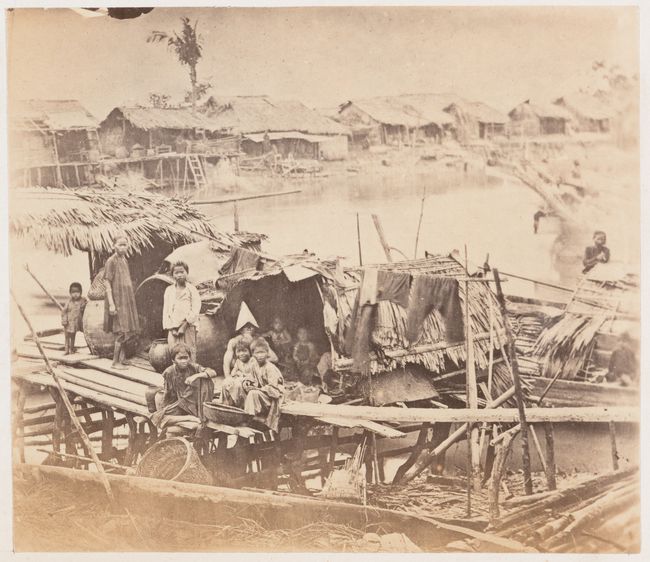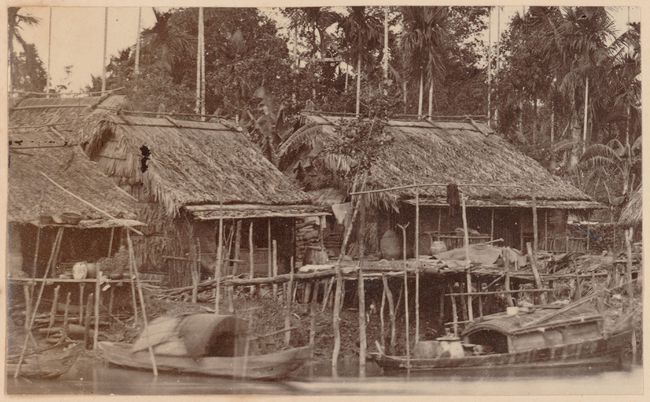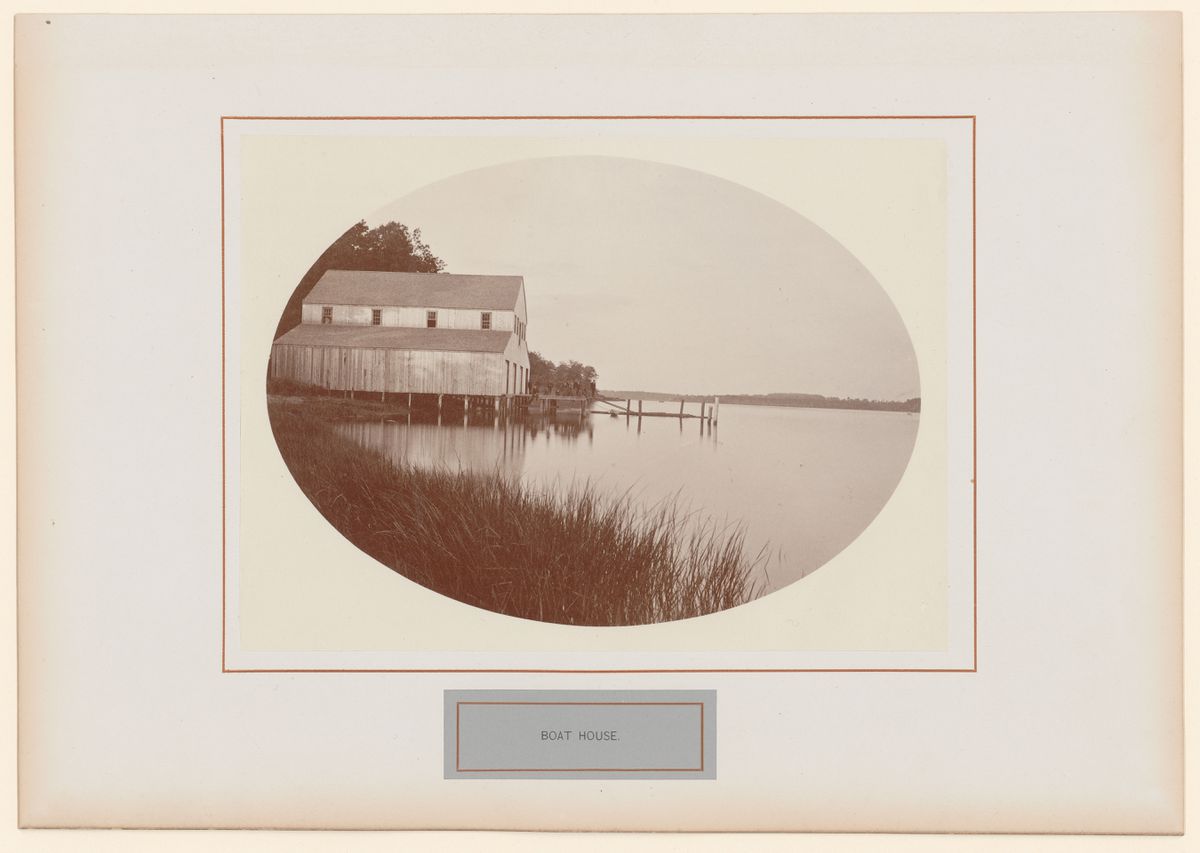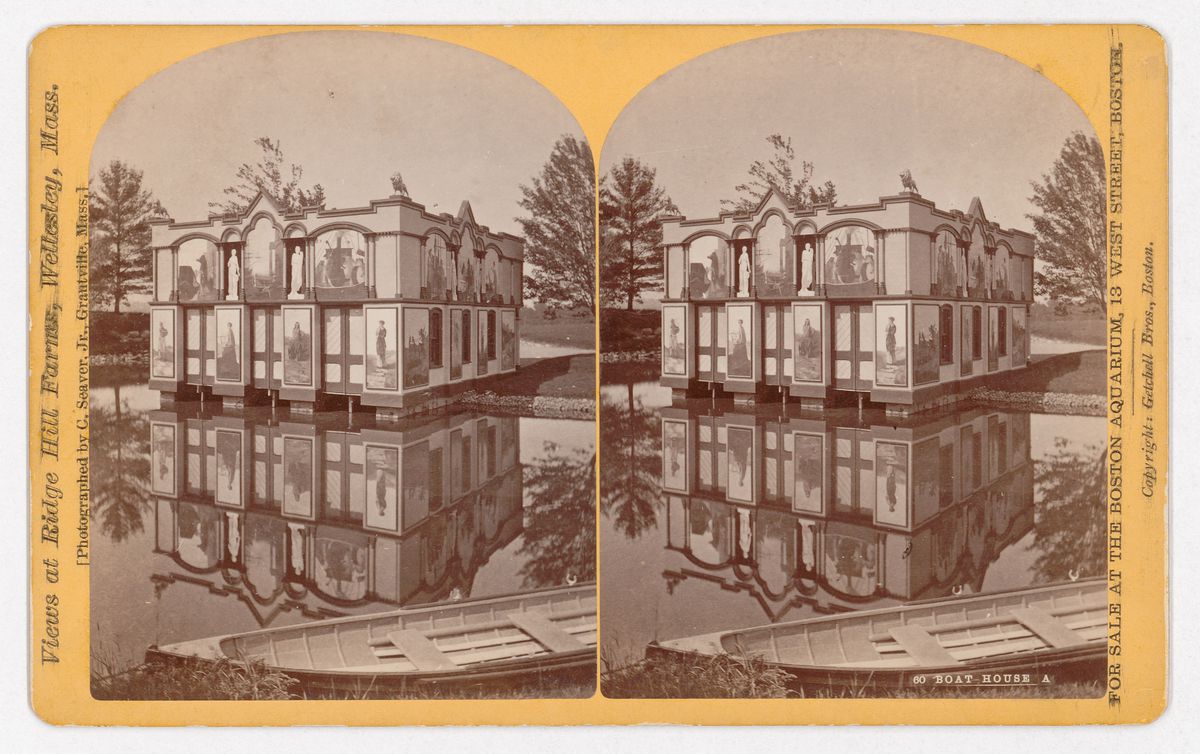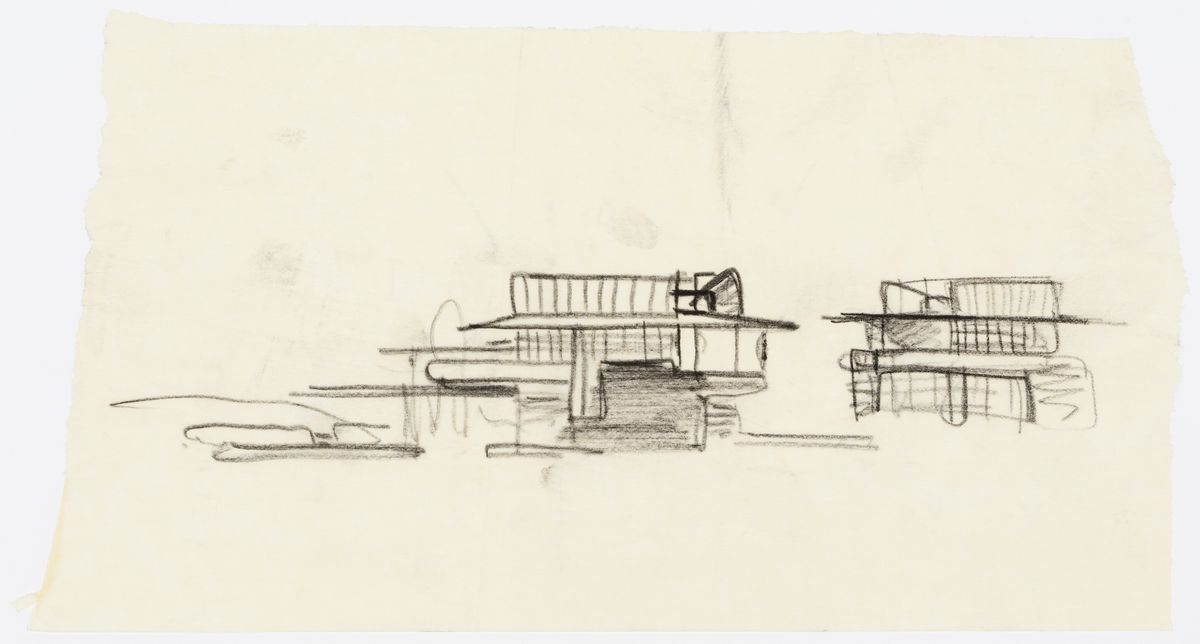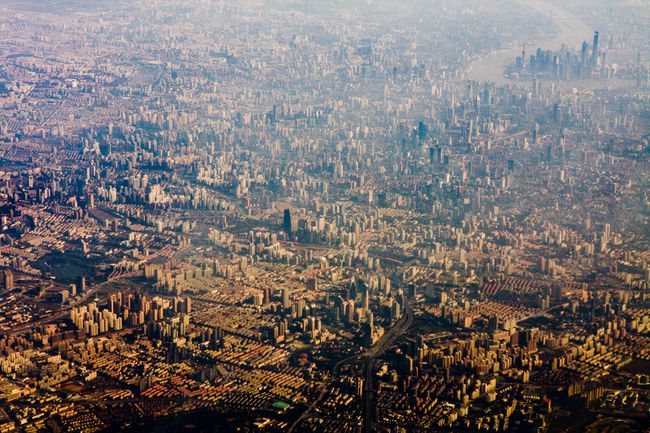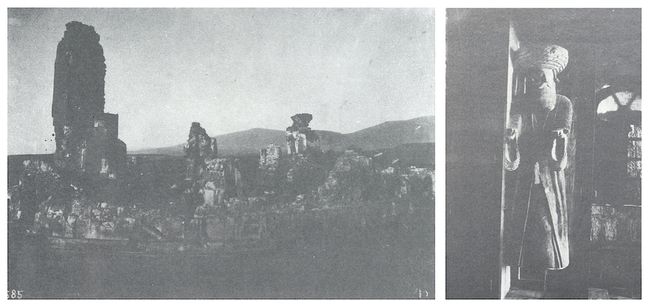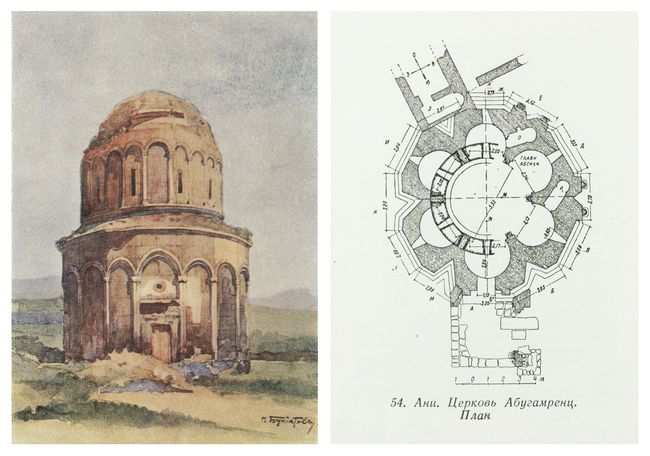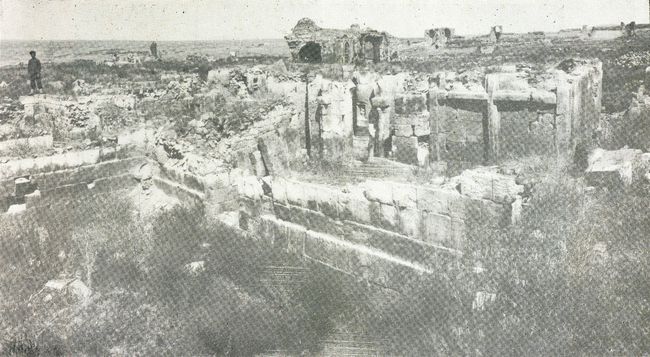In the Scale of... a Boathouse, a Skyscraper, a Ruin
Mengxiao (Mechelle) Tian, Haohao Zhu, and Ecem Sarıçayır
This is the fourth installment of “In the Scale of…,” a series of counterproposals to conventional constructs of scale, authored by the participants of our 2020 Toolkit for Today and introduced by Émélie Desrochers-Turgeon and Eliyahu Keller in this article. In the following texts, Mengxiao (Mechelle) Tian surveys different forms of “boathouse” and the disparate kinds of life they support, Haohao Zhu describes the conflation of large urban forms with smaller, interconnected events, and Ecem Sarıçayır looks at renegade archaeological work done pre-World War I in the South Caucasus. Each author examines how buildings and their features give form to enormous cultural confluences and contradictions.
In the Scale of a Boat/House
Mengxiao Tian (Mechelle)
For those living in precarious situations, without land ownership or rights to space, living on the water, using boats as dwellings, is a sustainable alternative. Accordingly, this first boat/house (typically called a houseboat) is more functional that a static dwelling, as it also meets the needs of migration, fishing, and other means of cultivation and production. The size of this dwelling is smaller than that of a typical boathouse, the spatial organization is similar to that of boat, and the dwelling can be moored closer to harbours, markets, and rivers for access to fishing waters.
Within this way of life, there is a second kind of boat/house, which is small building referred to in Chinese as 水欄 (Shuǐ lán), loosely meaning “waterside shed.” It stands at on a riverbank using a structural system of tall, slender wooden pillars that extends into the mud to support the living space above. In the dry season, a small fishing boat can be anchored under the housing and the space amongst the pillars can be used to house animals. Ladders are using to access the house on the side facing the river. But in the rainy season, the water level rises and the whole building appears to float on the water, just like a boat. Some of these second kind of boat/houses float entirely on the water, closer to standard buildings in form and in function. Occupants can park their boat beside the house and pass directly into the building. These houses are mobile, they can flow along with the water to any location better for production or to avoid a flood. When these houseboats are concentrated together, they form a floating society and marketplace on the water, becoming an extension of the society on land. These houseboats show characteristics of spatial temporality, in that they have the flexibility to change according to climate patterns.
Lastly, there exists a third kind of boat/house (typically called a boathouse) that is closer to a building in its spatial configuration and appearance but that floats on the water or is moored on the shore in a boat-like way. Perhaps this way of life was a submissive choice at first (for those without land use rights), but gradually, the architecture revealed that it is autonomous from nature. The mobility of this third boat/house is diminished. And at the same time, the scale is larger, the space is more flexible, and the decorations become essential. The boat/house can be a residence or a vacation home, and so has more spatial needs and begins to require the involvement of architects. With more flexible space and a richer functionality, the floating boat/house is no longer an extension and subsidiary of the land. Instead, the larger scale makes it a place that can almost be juxtaposed with the land. Sometimes the boat/house can even be sold as an island or with an island. It is no longer the economic structure for working and living that has been used throughout generations, it is rather a floating building in which boat’s form and function have vanished.
In the Scale of Bigness
Haohao Zhu
Scale and quantity are particularly closely correlated in the process of urbanization. With the rapid rise of modern industrial societies in the 1920s, the issue of quantity continued to emerge, especially with regards to the influx of large numbers of people into cities, the shortage of housing, outdated infrastructure, the rapid expansion of settlement areas, and so on. The modern movement in architecture provided the basic spatial realization for the Fordist model. However, subject to the transformation of economic and social structures in the 1960s, a generation of young, dissatisfied architects questioned the principles of the early modernist architects, replacing rationalism with empiricism. They promoted a new interpretation of the relationship between scale and quantity and positioned the issue within the discourse of proportion, whose legitimacy came from the relationship between the part and the whole.
In this context, Grossform (literally meaning “large form” in German) is reintroduced. Form is endowed with stronger structural meanings, aiming to provide clear orders for the effective organization of architectural complexity. At the same time, based on Gestalt principles in visual perception, Grossform establishes an analogy between the urban fabric and the images of daily objects. By virtue of the scale-free characteristics of the relationship among individual parts, the hierarchical system of different scales is transformed into a continuous expression of the connections between the part and the whole. Here, “Gross” means to achieve the integration of various morphological elements through structural rules of form. This is one of the paradigms for thinking about Bigness in the field of urban architecture.
Another paradigm comes from the reality that buildings are continuously getting bigger. Manhattanism, once slandered by Le Corbusier, provides a city model commensurate with the glory of mechanical civilization. Under the absolute urban grid and clear boundaries provided by zoning laws, skyscrapers provide an illusory combination of heterogeneous individuals. A huge, neutral container encloses diverse elements within a definite boundary. With the help of horizontal divisions by floor slabs, and vertical connections by elevators and other mechanical elements, its interior is a reactor for countless events. The fragmented parts are finally juxtaposed in a montage to form a new whole, which can be considered, as Rem Koolhaas writes, the “stratosphere of architectural ambition.”1
This is the metropolitan architecture that emerged with the rise of industrial capital in the twentieth century. It is based on the concentration of population and capital and related to the intensity of economic operations, the crowdedness of people’s lives, and the vitality of social interactions. As a symbol of new urban culture, density appears to be the gathering of a large number of buildings, but its essence is in the gathering of people and their lives. If a city is no longer regarded as an agglomeration of constructions, then in “a world scraped of architecture,” urban life can still give birth to the features of Bigness.2
Under the premise of major changes in the scale of cities and architecture in the twentieth century, a broader view of Bigness is built up in the field of urban architecture. Under the philosophical guidance of the coincidence of opposites, the idea of Bigness establishes new internal connections among elements through a structured process, completes the toleration and acceptance of differentiated fragments, and realizes the unity of complexity and contradiction.
In the Scale of Nations
Ecem Sarıçayır
Tʻoros Tʻoramanyan, Zvarʻnostʻ, Gagkashen, (Yerevan, Armenia: Sovetakan Grokh, 1984), plate 22 and 29. Library MAIN, BIB 183112, CCA. Based on the ruins of Gagkashen Church (left) and on Gagik’s sculpture (right), which is believed to have once carried an architectural model of the church in its hands, Tʻoramanyan argued that another important Armenian structure, Zvarʻnostʻ also had a circular plan—going against the clergy and other scholars working on Armenian churches.
Following the Russo-Ottoman War of 1877–1878, the Russian Empire annexed the border town of Kars in the Ottoman Empire that was inhabited by, among others, Armenians and Greeks, as well as Muslims such as Kurdish and Karapapakh peoples. Kars and its surrounding region were to remain securely within the Russian Empire’s borders until World War I. During these forty years, the Kars region became a site of competing imperial and national aspirations. The Russian Empire developed its built environment for military and colonial purposes, and the history and culture of the region were researched by various scholars from the Russian Empire. A crucial part of the imperial interest was Nikolaĭ Yakovlevich Marr’s excavations of Ani, a historic city near Kars containing various structures that attest to the multi-ethnic and multiconfessional makeup of the South Caucasus, dating as far back as the fifth century.
Nikolaĭ Gavrilovich Buniatov and I͡uriĭ Stepanovich I͡aralov, Arkhitektura Armenii [Armenian Architecture] (Moscow: Gos. izd-vo arkhitektury i gradostroitelʹstva, 1950), 7, 71. Library MAIN, NA1474 .B8 1950, CCA. I͡aralov posthomusly published Buniatov’s various illustrations and ideas on Armenian architecture in Arkhitektura Armenii [Armenian Architecture]. Even though his theoretical work on Armenian architecture often diverges from Western literature, the opening piece of the book—the still life depicting a ruin of an Armenian church in a romanticized landscape empty of life—largely follows the Western convention of isolating the architectural structure. Similarly, the plan of Abughamrents Church in Ani reproduces the church using the survey drawing, the roots of which goes to military techniques.
Before archeological research was hindered by the start of World War I, linguist Marr worked together with many local architects, historians, and labourers on Ani, believing that such work should be conducted in collaboration with multi-disciplinary teams and various inhabitants of the region. Tʻoros Arutyunovich Tʻoramanyan (1864–1934), known as “the architect” by his co-workers on the excavation site, produced one of the earliest architectural theories regarding the region’s heritage. Working along with Tʻoramanyan in Ani, architect Nikolaĭ Gavrilovich Buniatov (or Buniatyan) (1884?–1943) produced many drawings and illustrations of Ani’s excavated buildings, most importantly building surveys. Furthermore, Nikolaĭ Mikhaĭlovich Tokarskiĭ (1892–1977) researched the extensive cave system underneath and around Ani and later wrote an architectural history of the region based on his experience in Ani.
Although they mirrored a Western gaze upon the ruin, these scholars put forward alternative conceptualizations of the region’s architecture that were at times in conflict with academic and state discourses of identity and culture. I argue that the architectural heritage of the historical city of Ani provoked them to develop narratives of hybridity with which to interpret the histories and cultural productions of the diverse peoples of the South Caucasus. Together with Nikolaĭ Y. Marr, they strayed from prevailing scientific methodologies and created alternative theories that emphasized exchange, interconnectedness, and co-constituency. Often, their arguments relied on close inspection and reproduction of specific details of Ani’s ruins. These fragments of heritage, dwarfed by the universalizing concepts of empire and nation, became evidence both supporting and challenging emerging nationalisms in the region. This excavation traces how in the scale of the architectural fragment, nation-states are both made and undone.
